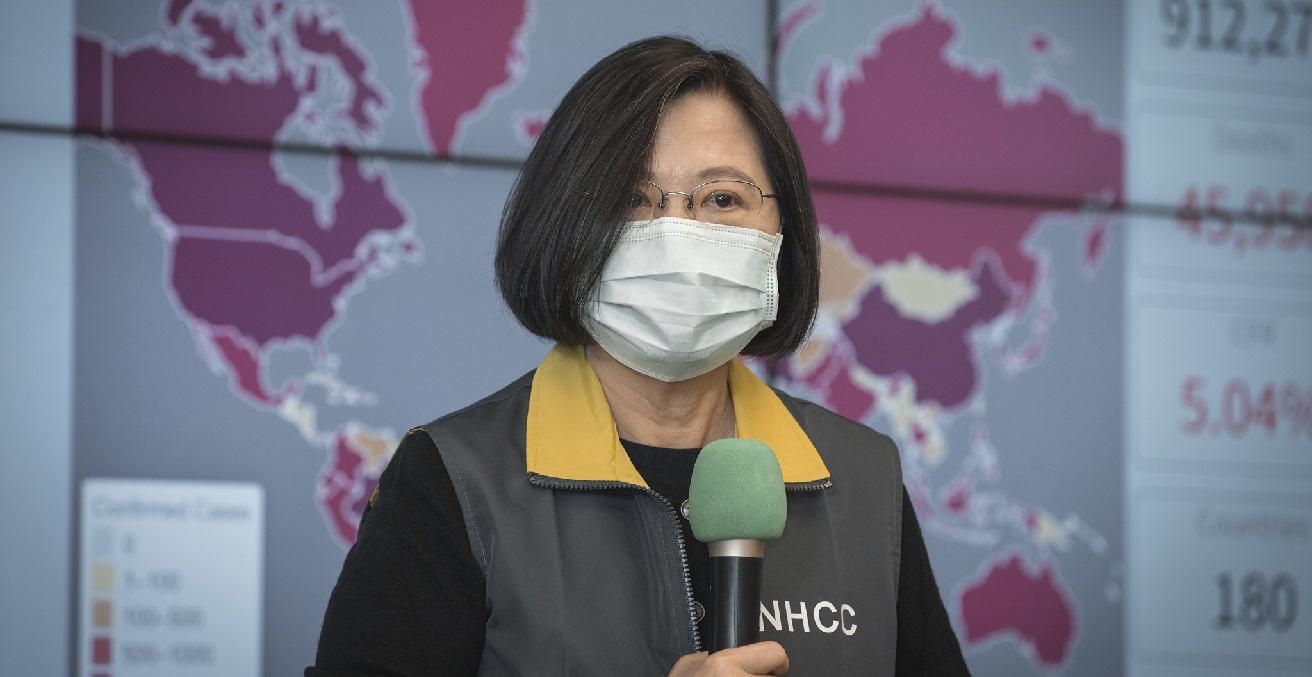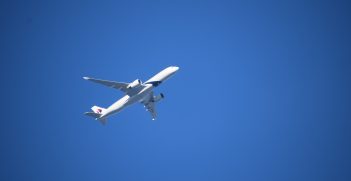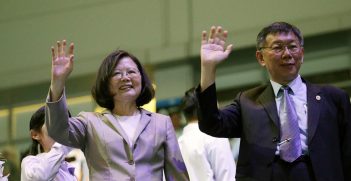Responding Successfully to COVID-19: A Case Study of Taiwan

Taiwan has successfully managed the COVID-19 pandemic. It has skilfully used this success and its “Taiwan can help” campaign of mask donations to enhance its international standing and reduce its diplomatic isolation.
The key aspects of Taiwan’s fight against COVID-19 were an immediate response to the virus outbreak, stringent coordination of state and private actors, efficient contact tracing, a compulsory mask policy, a massive increase in the local production of masks, transparency about government actions, and an open information policy. Taiwan got ahead of the outbreak with early testing and treatment, early activation of medical personnel, social distancing measures, and extensive use of big data analysis. Its negative experience and high mortality rate during the 2002/03 SARS pandemic caused the government to be better prepared and the public to be more cautious and willing to follow government instructions. Unlike in other countries, the government did not introduce mass testing and did not shut down schools, companies, and businesses. In this way, Taiwan’s economy only took a light beating. As of June 3, 2020, there were only 443 cases, 428 recoveries, and only 7 deaths in a population of 23.5 million.
Government efforts were led by three experienced politicians with steady hands. Taiwan’s President, Tsai Ing-wen, had just won a landslide victory and a strong political mandate for her second term on January 11, 2020, just at the start of the pandemic. Vice President Chen Chien-jen, an epidemiologist with a doctorate degree in public health from Johns Hopkins University and Health Minister from 2003-05 during the SARS epidemic, and present Health Minister and Commander of the Central Epidemic Command Center (CECC), Chen Shih-chung, were the public faces who communicated Taiwan’s strategy internationally. All three guided the public through the outbreak.
After rigorously revamping its health care system after the SARS pandemic, Taiwanese health authorities had accumulated extensive knowledge about treating pandemic patients. Taiwan had also invested in extensive capacity for biomedical research and big data facilities. Ironically, Taiwan had one advantage compared to most other countries: it didn’t have many Chinese tourists, as China had banned Chinese tour groups to Taiwan after the election of President Tsai Ing-wen in 2016.
Managing a pandemic
When the outbreak in Wuhan started at the end of December 2019, Taiwan was in the middle of a national election campaign and ahead of the all-important Chinese New Year holidays. However, with its proximity to China, many Taiwanese working in China, and a high flight frequency to and from China, Taiwan reacted very quickly after news of a new virus in Wuhan was picked up on December 31. The CECC set up a response team on January 2, and on January 20, mobilised various ministries and institutions in the academic, medical, and private sectors. When its first COVID-19 case was confirmed on January 21, Taiwan raised its alarm system two days later to level two. Health Minister Chen, as the CECC Commander, coordinated the response and gave daily press briefings, thereby becoming the country’s “Corona czar.”
On February 27, the alert was raised to the highest level one. Taiwan imposed a 14-day quarantine (home isolation) on all international arrivals on March 14, which was scrupulously enforced by the local authorities. Since March 19, foreign nationals were barred from entering Taiwan.
Health authorities started COVID-19 RT-PCR tests in January, especially on people returning from affected areas and introduced physical distancing very early. An advantage was that every Taiwanese citizen had a health card with their medical history embedded in a computer chip. Hospitals could easily access this information, as well as a patient’s travel history, which was provided by immigration authorities and integrated into the health cards. Key to the success were testing, early diagnosis, and treatment.
On January 24, after demand for surgical masks had spiked, the government stopped all exports of surgical face masks and introduced a rationing system. It requested local industries increase production of masks and other personal protection equipment (PPE) and later requisitioned factories for further production. On April 1, wearing masks became mandatory. By the end of April, daily mask production reached 17 million.
Mask diplomacy: China and Taiwan
After its fast recovery from the pandemic, China grasped the political opportunity to trumpet its success in overcoming the pandemic and showcase itself internationally as the model country in fighting and winning against the virus. Its “mask diplomacy” campaign portrayed China as a generous donor of medical supplies, PPE, and assistance to some 90 countries. China also contributed an additional $20 million to the WHO. However, cracks showed in China’s narrative when some of the donated equipment proved to be faulty or substandard. The mask campaign seems to have backfired when China pushed hard against countries critical of its early response to the pandemic.
While China was exercising soft diplomacy, the Chinese Navy continued to show its strength. The months-old standoff over oil and gas exploration in the South China Sea has even intensified in recent months. A Malaysian-contracted exploration ship doing surveys in a zone claimed by Malaysia, Vietnam, and China was closely shadowed by a number of China Coast Guard vessels. In April, a Chinese Coast Guard ship sank a Vietnamese fishing boat near the Paracel Islands and in another incident, “pointed a radar gun” at a Philippine Navy vessel, which led to strong protests from the Philippines. Also in April, a Chinese aircraft carrier sailed twice in a demonstrative way along the coasts of Taiwan. There were reports of intrusions by Chinese military planes into Taiwan’s airspace in February, March, and April. With renewed military activities in the South China Sea and around Taiwan, China’s mask diplomacy did not go down well, especially in those countries still in the middle of fighting against the pandemic.
When local daily production of masks in Taiwan reached 17 million, the supply was deemed sufficient for Taiwan’s own population. On April 5, Taiwan started the first of three rounds of international humanitarian assistance under the slogan “Taiwan can help,” much to the chagrin of China. The Taiwanese government and NGO’s have donated over 17 million masks, as well as medical equipment such as thermal imaging devices and infrared thermometers to the worst-hit countries and political allies. Most of these shipments went to the US and to Europe, and some went to Japan and Southeast Asia, Australia, New Zealand, and South America. A small amount of equipment went to African and Middle Eastern countries, and to medical staff in Syrian refugee camps. About one million masks were sent to the Marshall Islands, Nauru, Tuvalu, and Palau. These four countries are among the fifteen that officially recognise Taiwan and are considered close diplomatic allies. The donations were accompanied by PR activities, like high-profile TV interviews on global networks.
So far, the “Taiwan can help” campaign has gone without glitches, unlike China’s mask diplomacy. It resulted in a very positive international response and has won Taiwan international praise for its handling of the pandemic and generosity. Taiwan and some European countries have also been cooperating on medical research and the development of COVID-19 vaccines. Taiwan, so the Taiwanese Foreign Ministry says, “is willing and able to contribute even more to global public health.” Two Taiwanese experts even participated in the Global Research and Innovation Forum organised by WHO on 11-12 February 2020, “thus contributing, alongside other world scientists, including from mainland China, to critical research questions and to finding ways to work together to advance the response.”
Lobbying and diplomatic ping pong
Making use of this unexpected momentum after years of political isolation, Taiwan and its main ally, the US, started a diplomatic offensive among their European and Pacific allies for a renewed participation of Taiwan in the WHO. They argued that it would be important for the WHO to take on board Taiwan’s relevant COVID-19 expertise, especially at the virtual meeting of the 37th World Health Assembly, the WHO’s decision-making body, on May 18, 2020. The US pushed this campaign in spite of President Trump having berated the WHO for its “insufficient and belated actions” and announcing on May 29 the termination of the US’s relationship with the WHO. A letter from Congress also lobbied 55 countries seeking an end to China’s efforts to keep Taiwan out of international organisations, especially the WHO. A US State Department campaign called “Tweet for Taiwan” also went ahead on May 2. China dismissed this push for Taiwan’s admission to WHO and made recognition of Taiwan as part of China the key precondition, a request which was immediately rejected by Taiwan. Both Australia and New Zealand, which openly supported the Taiwan/US move for greater WHO participation of Taiwan, were immediately reprimanded by China, which threatened that bilateral political and trade ties could be damaged. Taiwan‘s Foreign Minister Wu announced on May 18 that Taiwan would “postpone its efforts.” This time around, the diplomatic push was unsuccessful, and the diplomatic ping pong is ongoing.
Summary
Taiwan fought the pandemic with a combination of vigilance, early proactive measures, coordination of actors, reliance on big data and, most importantly, information-sharing with the public. President Tsai’s popularity and approval ratings have soared. Her deputy was omnipresent in the international media and her health minister was celebrated as a public hero and has been widely credited with Taiwan’s success in the pandemic response. Taiwan has skilfully used the international spotlight and positive momentum to maximise its international geopolitical standing, and has thereby reduced its diplomatic isolation.
Dr Anne-Marie Schleich was a career German diplomat from 1979 to 2016. Most recently, she was the German Ambassador to New Zealand and seven Pacific Island Countries from 2012 to 2016. She was the German Consul-General in Melbourne, Australia from 2008 to 2012 and has also served in Singapore, Bangkok, Islamabad and London.
This is an edited version of an article that was originally published by ETH Zurich University and the Institut fur Strategie- Politik- Sicherheit und Wirtschaftsberatung (ISPSW), Berlin in May, 2020.





